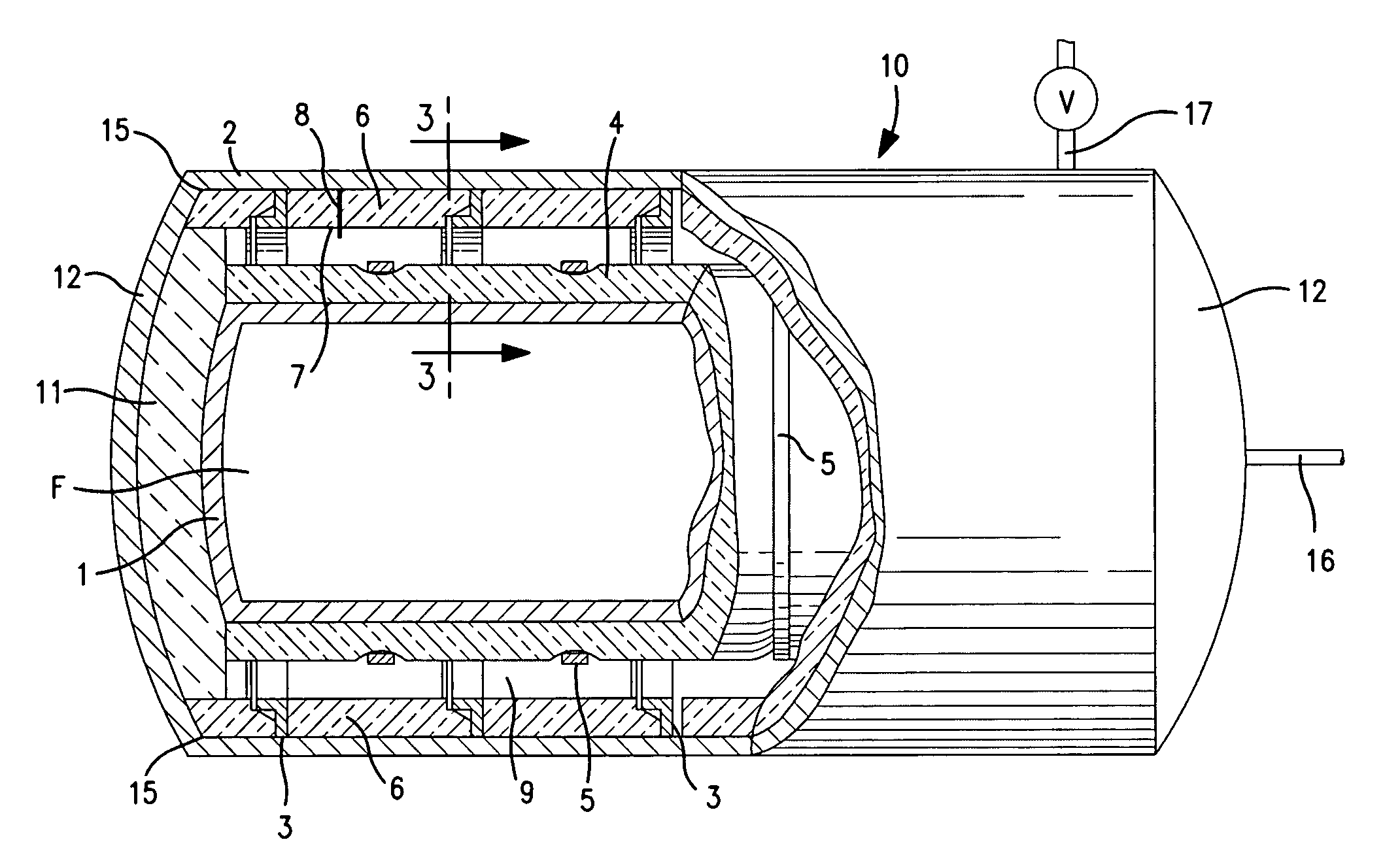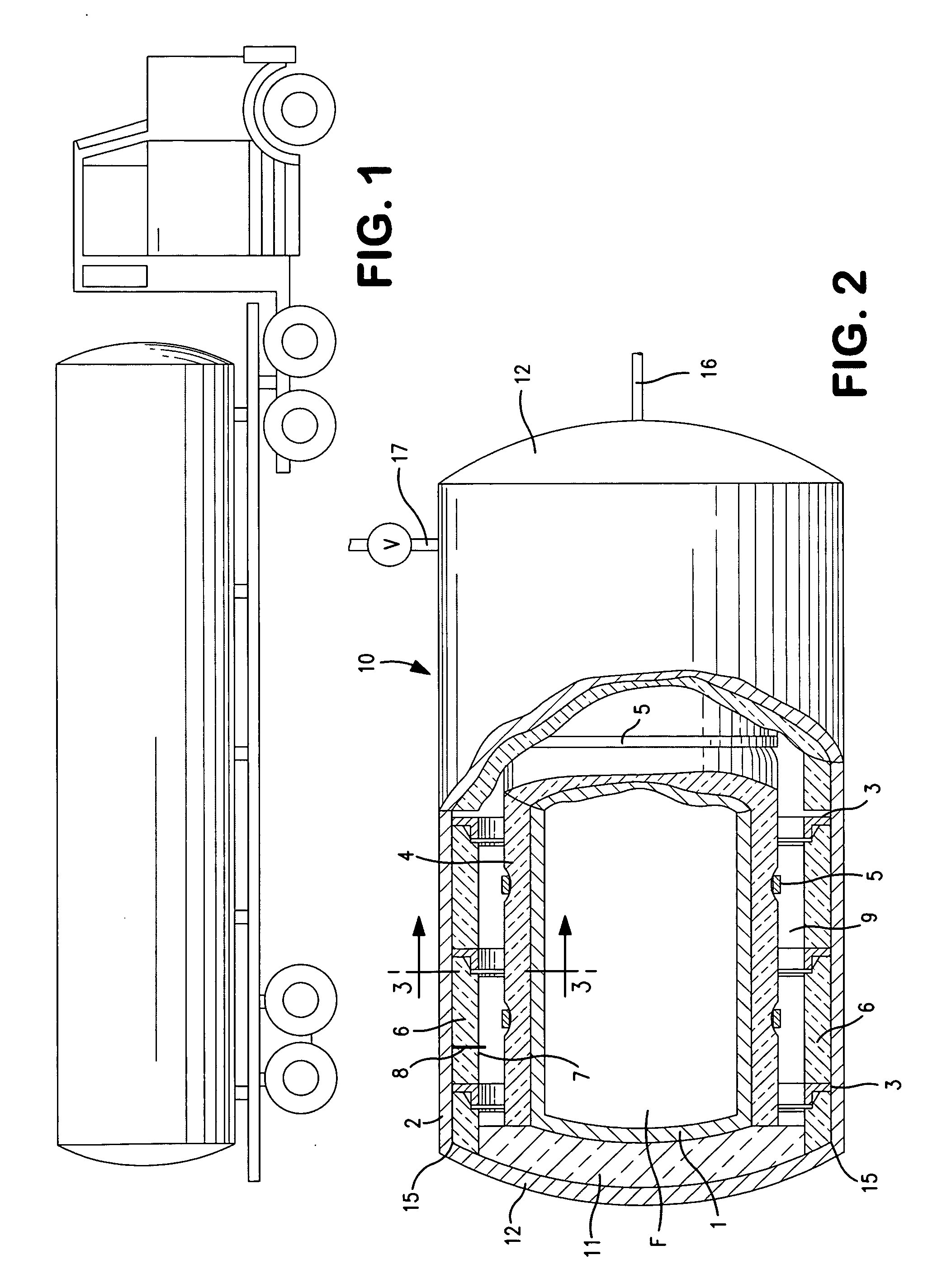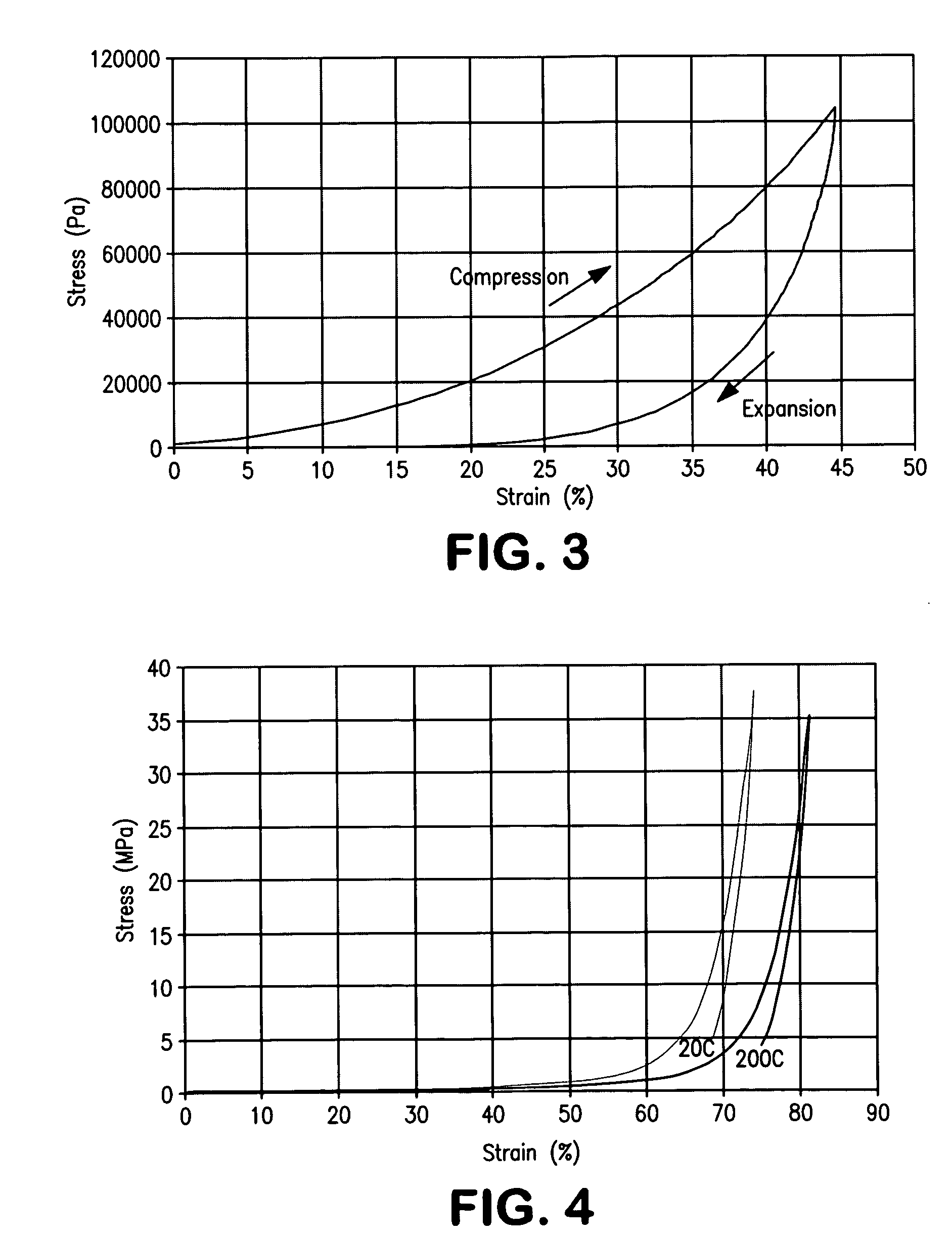Insulation for storage or transport of cryogenic fluids
a technology for cryogenic fluids and storage or transport, which is applied in the direction of manufacturing tools, lighting and heating equipment, and discharging methods of containers, etc. it can solve the problems of increasing the weight of the trailer, the need for their use, and the design and manufacture of the vessel is complicated, so as to reduce or eliminate the requirement for structural reinforcements, increase the overall efficiency of storage and/or transportation, and increase mechanical strength
- Summary
- Abstract
- Description
- Claims
- Application Information
AI Technical Summary
Benefits of technology
Problems solved by technology
Method used
Image
Examples
Embodiment Construction
[0031]The above and other features of the invention including various details of construction and combinations of parts, and other advantages, will now be more particularly described with reference to the accompanying drawings and pointed out in the claims. It will be understood that the particular method and device embodying the invention are shown by way of illustration and not as a limitation of the invention. The principles and features of this invention may be employed in various and numerous embodiments without departing from the scope of the invention.
[0032]The invention generally relates to the storage and / or transportation of fluids held at low temperatures and in particular to cryogenic fluids.
[0033]Generally, the term “cryogenic” is used to describe low temperatures, for example in the range of from absolute zero to about 123° Kelvin (K) or −150° centigrade (C). A “cryogenic fluid” may be a liquid or a gas at a low temperature, for example a temperature that is less than ...
PUM
| Property | Measurement | Unit |
|---|---|---|
| thickness | aaaaa | aaaaa |
| thickness | aaaaa | aaaaa |
| temperature | aaaaa | aaaaa |
Abstract
Description
Claims
Application Information
 Login to View More
Login to View More - R&D
- Intellectual Property
- Life Sciences
- Materials
- Tech Scout
- Unparalleled Data Quality
- Higher Quality Content
- 60% Fewer Hallucinations
Browse by: Latest US Patents, China's latest patents, Technical Efficacy Thesaurus, Application Domain, Technology Topic, Popular Technical Reports.
© 2025 PatSnap. All rights reserved.Legal|Privacy policy|Modern Slavery Act Transparency Statement|Sitemap|About US| Contact US: help@patsnap.com



